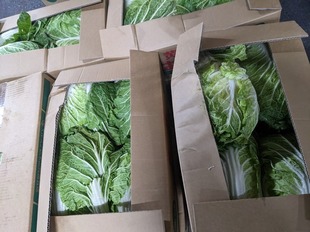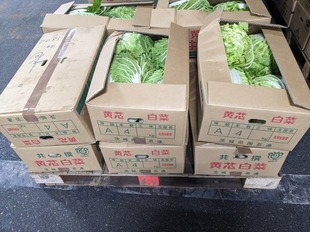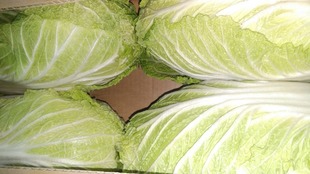There is a record that Dainichizuka on Mt. Kono was presented during a land survey by Ina Bizennokami Tadatsugu(1550-1610: Local expert ﹦Agricultural administration bureaucrat ≈ 地方巧者(農政官僚))during the Kan'ei era (1624-1643), and it is said that there was already a zelkova tree there at that time. In the Meiji era, Iinuma Elementary School was built on the site, and in 1978, the site was left as land owned by Katori Shrine within the grounds of Ishige Nishi Community Center, where it remains to this day. Years of wind and rain have caused the mound's fill to wash away, exposing the zelkova roots, and although a hollow has developed around the base, the tree is in excellent health. The trunk circumference is 520cm at its eye level. The 1600s marked the end of an age of war and the beginning of an era of large-scale development and the expansion of cultivated land. In the 1700s, the glory of the Genroku era came to an end and a period of disasters followed. The Shogunate's management also became increasingly difficult, and various reforms were carried out, including the Kyoho Reforms. In the 1800s, social contradictions became even more serious, leading to the opening of the country under external pressure and the Meiji Restoration.
【Product name】
Yellow core cabbage
【Type 】
Brassica rapa var. pekinensis
【Production area】
Konoyama, Joso City, Ibaraki Prefecture (Ibaraki Prefectural Horticultural Association)
【Origin of the name】
Isn't it named for its low-temperature heading properties, few physiological disorders, and the gorgeousness of place names and products?
【Main features】
The Kinugawa River, which flows through the central part of the city, is the symbol of the city, and the city limits are built in the basin of the Kinugawa River. The eastern lowlands of the Kinugawa River are made up of vast paddy fields, while the western part is a hilly area, where you can see villages, farmlands, and lush flatland forests. A natural forest of evergreen trees such as oaks can be seen used as hedges to protect against wind and fire. In addition, while there are developments such as golf courses, there are many animals and plants unique to Satoyama Landscape. Sugo Swap, located on the border with neighboring Bando City, is designated as a suburban green conservation area and a natural environment conservation area, and is a valuable place where you can observe the nature unique to wetlands. There are also facilities such as 'Asunaro no Sato' to deepen contact with nature. The Ishige area became the home of the Taira no Masakado Rebellion during the Heian period, and a regional exchange center modeled after a castle has been built on the site of the residence of the Toyoda clan, who ruled until the Sengoku period. The producer, Mr. Yasuhiko Sotome, is an auditor of the Shimodate Tax Association and has a seat in the Mamusubi Taxpayer Savings Association Federation. According to the National Tax Agency, in August 1945, Japan accepted the Potsdam Declaration, marking the end of the war. In 1948, about 8 million demand letters were sent because the economy was in a state of bankruptcy due to social turmoil and tax hikes that had continued since the war, and the war damage caused the economy to collapse. However, the rate of delinquency occurrence (ratio of newly occurring delinquency to the amount of tax to be paid) is about 40%, and tax revenue is in a crisis. For this reason, in January 1948, an emergency tax payment countermeasures committee was established within the Ministry of Finance, consisting of members of the media and film industry. In 1949, the National Tax Agency was established and the Public Relations Division was established, and public relations activities were carried out mainly by the National Tax Agency, the Regional Taxation Bureau, and the Tax Office. In 1954, in order to obtain the understanding and cooperation of taxpayers and reflect them in smooth tax administration, the “Month to Hear the Voices of Taxpayers” (currently “Tax Consideration Week”) was established. A system was created to reflect this in the administration. The tax payment cooperatives that existed since the Meiji period were abolished in 1947 because of incidents such as the union executives intervening in tax collection, which was considered by the GHQ to hinder democratic tax payment, but tax revenues declined after the war. In light of this, the 1951 tax payment savings association law made a new start as a tax payment savings association. The collection system also evolved to improve convenience for taxpayers, and in 2003, payment by Internet banking was established, and in 2008, a tax payment system at convenience stores was enacted. In addition, he will be chairman of the Election Commission (Mitsukaido Suwa Town) on April 28, 2021 and will serve until December 25, 2023. Election administration commissions are administrative committees established in prefectures and municipalities based on Article 181 of the Local Autonomy Law, and are independent from the governors and mayors of municipalities, which are the executive organs of general administration. Established as an organization to manage election-related affairs so that elections are held fairly and properly, it is composed of four members elected by the assembly. In addition, a secretariat has been set up to carry out the affairs related to the election administration committee. It seems that not only during elections, but also on a regular basis, they are preparing electoral lists and conducting enlightenment projects to raise voter's political awareness. As an organization, the number of commissioners will be four, who are entitled to vote and elected by members of the city council. The chairperson shall be elected from among the committee members. The term of office is four years and can be reappointed. Joso City is located in the southwestern part of Ibaraki Prefecture, within 55 kilometers from the city center, with Tsukuba City and Tsukubamirai City in the east, Bando City in the west, Moriya City in the south, and Yachiyo Town and Shimotsuma City in the north. touch. It stretches about 20 kilometers from north to south and about 10 kilometers from east to west, with an area of 123.64 km2. The altitude is about 5 to 24 meters, and the climate is of the Pacific type, and it is mild throughout the four seasons. The Kinugawa River, a class A river, runs through the center, and the eastern lowlands are vast paddy fields. The western part of the city is hilly, with villages, fields, and flatland forests, but housing complexes, industrial complexes, golf courses, etc. have also been developed, and urban functions are being strengthened as a suburban development zone. As for the road system, National Route 294 runs north-south through the city, and National Route 354 runs east-west. In addition, there are major local roads and general prefectural roads that connect with surrounding municipalities. In addition, the Metropolitan Inter-City Expressway has opened almost in the center of the city, and it seems that the development of a wide-area road network is progressing. Regarding railways, the Kanto Railway Joso Line runs from north to south, connecting Toride with Shimotsuma / Chikusei, and connecting with the Tsukuba Express at Moriya. Apparently. Regarding the current situation of Joso City agriculture, in the western part of the Kinugawa River, paddy fields and hilly upland areas are mixed, and the conditions are very suitable for the production of agricultural products. Although many kinds of agricultural products such as fruit trees and livestock are produced, the city does not have a specific agricultural product as its main product, and it seems that it is difficult to produce branded agricultural products that boast a certain market share. In addition, we set up a certified farmer's association consisting of five subcommittees: "normal crops," "greenhouse vegetables," "outdoor vegetables," "flowers," and "livestock farming." It seems that he is working every day to improve his business management ability. In addition, 15 farmers, consisting of an agricultural manager, a female farmer, and a young farmer, are working as local leaders to secure and train successors and revitalize agriculture. In addition, there are eight direct sales stands for agricultural products in the city, where motivated small-scale farmers interact with consumers in a community-based manner. This seems to play a role in the revitalization of the region. In the area around the Joso Interchange currently under planning, we will promote the Agriscience Valley concept, strengthen production, processing, distribution, and sales, and cooperate with farmers and related organizations while considering exchanges that make use of agriculture. It preaches that it will lead to the revitalization of agriculture by promoting the sixth industrialization and regional branding. However, he also says that the main problems and issues facing agriculture in the city are as follows. Aging and Declining Farmers in Recent Years According to the national agricultural and forestry census, out of 2,990 farm households, 19.5% are full-time farmers and first-class part-time farmers, whose main source of income is farming. Of the 1,949 commercial farm households, 74.3% are “managers over the age of 60.” Agricultural employment continues to decline, especially for those under the age of 69. In 2015, the total number of people working in agriculture was 2,609, but if this trend continues, it is expected to decrease to about 1,500 by 2025, and about 600 people under the age of 69. In order to secure the human resources who will lead the business, regardless of the size of the farm, it is necessary to It is important to aim at stabilization of farm management and improvement of farm income by planning support of farmer and new farmer who want to support to lead to attractive farm management. As for the increase in abandoned cultivated land, the area of abandoned cultivated land in the city was 464 ha in 2010 and 504 ha in 2015. The causes of the increase in abandoned farmland are factors related to workers such as "aging and labor shortage'', "bad field conditions and no local farmers'', "slumping prices of agricultural products'', and "no profitable crops''. It seems that it is considered to be a complex factor, such as management factors such as "no damage" and "harmful wildlife damage". As for the impact of abandoned farmland, it seems that the occurrence of diseases and pests, the overgrowth of weeds, etc. will deteriorate the farming environment in the surrounding area, and it will also be a factor that hinders the accumulation of farmland for local farmers. Furthermore, it has adverse effects on the living environment of local residents, such as illegal dumping of garbage and the occurrence of fires. In order to stop the increase in abandoned farmland due to the aging of the population, it is necessary to develop a production base that will enable efficient consolidation of farmland to motivated farmers. There is Furthermore, it seems necessary to promote the creation of an environment in which agriculture and farming villages can easily demonstrate their multifaceted functions, such as efforts to conserve and utilize farmland through community-wide participation by citizens in cooperation with farmers and villages. Kosatsudai (Konoyama) 1 unit in the area where producers usually farm: designation number 36, designation date, January 8, 1990, Edo period, law and rule writing, etc., with heavy traffic A billboard posted at a market or crossroads is called an official bulletin board.). Kosatsudai were also set up in conspicuous places such as in front of the village headman's house, and it seems that the shogunate strictly controlled the villagers with the official bulletin board. Konoyama's official bulletin board seems to have been built at the end of the Edo period according to instructions from the magistrate's office. Standing on a platform made of cut stone, it is 2.5 meters high and the front roof is 3.6 meters wide. There are only two remaining valuable cultural assets in the old Ishige town. Yellow core Chinese cabbage looks like a normal Chinese cabbage, but the inside of the cabbage has yellow leaves. The leaves are soft, freshly picked, and have a sweet taste. Coloring from ingredients exactly, it changes to a dining table that shines. In addition, the original species is said to have originated in northern China, and has been cultivated in China since around the 10th or 11th century. It is said that it came to Japan surprisingly late, around 1875 in the early Meiji period. At that time, it seems that it was difficult to collect seeds and it did not spread very much. After that, during the Sino-Japanese War and the Russo-Japanese War, the seeds of delicious and excellent agricultural products that had grown large in the former Manchuria and Korea were brought back to Japan by Japanese soldiers, and it seems that the seeds spread throughout the country. It has occupied a position as a major vegetable since before the Second World War, but in recent years the planted area seems to be on the decline due to fewer opportunities to pickle Chinese cabbage at home and the influence of westernized eating habits. In addition, Chinese cabbage is roughly divided into Shandong type, North China type, and South China type. There seems to be a head type, a semi-head type, and a non-head type. It seems that most of the ones currently in circulation in Japan are the ball type. It is divided into two types: the cylindrical shape with tightly overlapping leaves on the head and the shell-like shape with wrapped leaves that do not overlap. Seems to be It is said that the reason why the yellow core type became mainstream is that Chinese cabbage is often cut and sold today, so it looks beautiful when cut in half and also tastes delicious. As a trivial piece of information, it seems that Japanese people saw Chinese cabbages for the first time, and it was the three strains of "Shandong Chinese cabbage" that were exhibited from Qing at the Tokyo Exposition. For a while after that, it seems that the headed Chinese cabbage was called Shandong Chinese cabbage. It seems that it was after that that those that did not form a ball came to be called Shandong Vegetable. After the exposition, two of the three plants were sold to Aichi Prefecture, and the seeds continued to be collected. It seems that there is a record that the Shandong Vegetable was presented to Emperor Meiji from Nagoya.
The local climate has an average temperature of around 13.5°C and an annual rainfall of about 1,300 mm. In winter, the northwest monsoon blows, but the amount of snowfall is extremely small, and it is the area with the least amount of rainfall in the prefecture. Also, the first frost is in late October and the last frost is in late April, and depending on the year fruit trees may suffer late frost damage, but the area is generally warm and the environment is suitable for growing crops. It has long hours of sunlight in winter and is suitable for outdoor cultivation. Cultivated varieties have been repeatedly planted with soft varieties and hard varieties based on the needs of the time and ease of production, and have changed to planting mainly yellow-core varieties that meet the needs of current consumers. The characteristics of the yellow core type are that the leaf color inside the Chinese cabbage is strong, and the sweetness is stronger than that of the white core type.
Most autumn and winter hakusai currently in circulation are of the yellow core type. In addition, the main varieties of spring Chinese cabbage are Cream No. 2 Chinese cabbage (Watanabe Seed Co., Ltd.) and Kikunishiki Chinese cabbage (Tohoku Co., Ltd.). The biggest feature is that the inside color of the bulb is also strongly yellow.It reaches the proper harvest time in about 60 days after planting. The leaf color is slightly dark green, the grass is slightly upright, and the number of outer leaves is small, so it can be cultivated densely. The balls are bullet-shaped, and the body and buttocks are well stretched and have a voluminous feel, and each ball weighs about 2.5 to 3 kg and is of good quality). There are Naomi Chinese cabbage and yellow gokoro Chinese cabbage.




